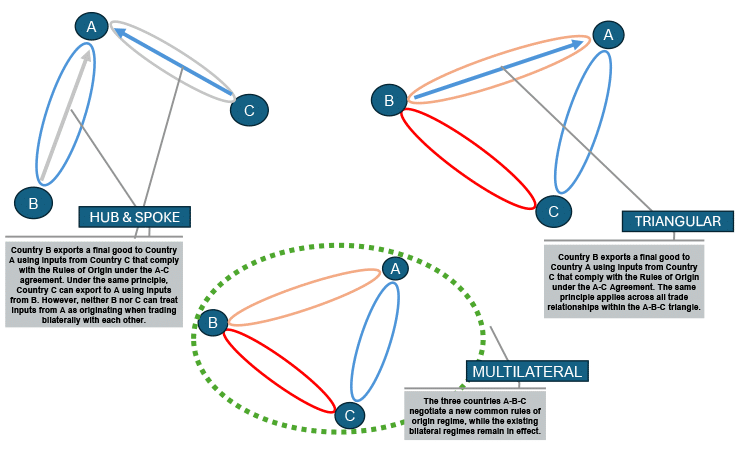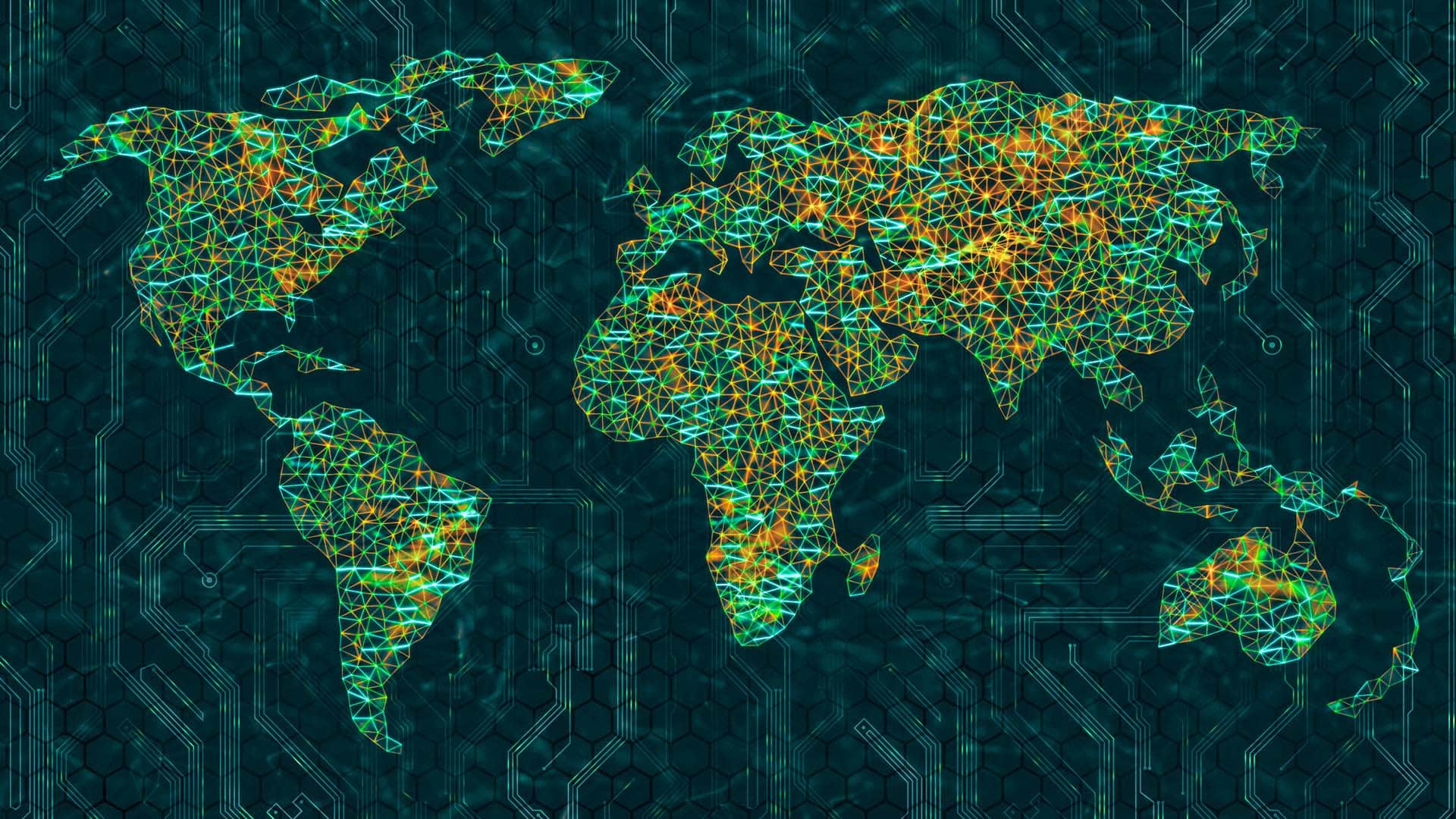Key messages[1]
- The new geopolitical reality and the protectionist drive of the US is causing a profound structural transformation in the international trading system: a redefinition of its architecture with new priorities emerging centred on economic security, resilience of supply chains, strategic autonomy and geopolitical realignment.
- In the face of growing geopolitical rivalry and protectionism from the US, the EU is redesigning its global trade architecture to strengthen its economic security and the resilience of its supply chains by intensifying the expansion and modernisation of its network of free trade agreements (FTAs).
- Latin America and the Caribbean (LAC) stands out as a reliable and like-minded partner. It is also economically complementary: the region offers precisely what the EU needs most, critical raw materials such as lithium and copper, and abundant renewable energy sources essential for the green and digital transition. The EU, in turn, has the capital, technology and know-how to promote the development of high value-added bi-regional production chains.
- Once the EU-Mercosur agreement is ratified, the EU’s network of trade agreements with LAC will cover 97% of regional GDP, well above the coverage of the US (44%) and China (14%). However, this network is not yet fully interconnected: the fragmentation of the current regimes of origin prevents the combination of inputs from different countries –even if they have bilateral agreements with the EU and with each other– to benefit from tariff preferences, limiting the creation of bi-regional value chains.
- To overcome the current fragmentation and interconnect the EU-LAC FTA network, a ‘flexible diagonal cumulation’ mechanism is proposed as a pragmatic, legally viable and high-impact solution, taking advantage of existing bilateral agreements. It would allow inputs from countries that have bilateral agreements with the EU and with each other to be considered as ‘originating’, without the need to modify the specific rules of origin of each treaty.
- The adoption of a ‘common protocol’ would be the regulatory basis for implementing this system of ‘flexible diagonal cumulation’ and would be incorporated as an annex to existing agreements between the EU and LAC countries or blocs of countries, without the need to renegotiate them.
- This proposal would be the stepping stone for the creation of an integrated EU-LAC bi-regional economic area, which would encompass 1.1 billion people and a GDP comparable to that of the US, an area that would allow for an increase of up to 70% in bi-regional trade and 40% in intra-regional trade, and would facilitate the articulation of bi-regional industrial chains, with great potential in high value-added decarbonised chains.
- Last but not least, this strategy also contributes to strengthening the EU’s global role as the anchor of a rules-based trading system and offers a replicable and expandable model for integration with other partners with whom the EU has bilateral agreements and who wish to connect to this network of agreements.
Analysis
1. Introduction
The new geopolitical reality and the protectionist drive of the US is causing a profound structural transformation in the international trading system: a redefinition of its architecture with new priorities emerging centred on economic security, resilience of supply chains, strategic autonomy and geopolitical realignment.
For the EU, this new scenario poses both a challenge and an opportunity. The EU bloc has stepped up the expansion and modernisation of its global network of free trade agreements (FTAs). This strategy includes recent agreements with New Zealand and the upgrading of existing agreements with key partners, as well as ongoing negotiations with India, Australia and South-East Asian economies. In this context, preliminary discussions have also emerged on a possible EU linkage with the Comprehensive and Progressive Agreement for Trans-Pacific Partnership (CPTPP), as part of a more ambitious framework for interregional trade integration.
2. An EU-Latin America network of agreements
Growing protectionism in the US and the concern among several Latin American and Caribbean (LAC) countries about increased dependence on China has led the region to reconsider its relations with the EU, an economic bloc of similar size to the US and China.
In this scenario, LAC offers the greatest potential for the projection of the EU’s trade strategy. Its network of agreements –already in force or in the process of ratification– constitutes a solid basis for promoting deeper integration based on shared values: a rules-based trading system, sustainable development and multilateralism.
In a world where resilience and diversification of supply chains have become essential for economic security, LAC stands out as a reliable and like-minded partner. It is also economically complementary. The region offers precisely what the EU needs most: critical raw materials –such as lithium and copper– and abundant renewable energy sources (solar, wind, hydro and geothermal) essential for the green and digital transition.
Trade relations between the EU and LAC have advanced significantly since the 2000s, with agreements recently modernised to incorporate new trade policy priorities. The modernised EU-Mexico Agreement –signed in 2025– expands market access provisions and updates regulatory cooperation chapters. Similarly, the EU-Chile Advanced Framework Agreement, signed in December 2023 and in provisional application since early 2024, incorporates new generation trade rules. In turn, the long-delayed negotiation of the EU-Mercosur Agreement was concluded in December 2024.
Once ratified, the EU-Mercosur agreement will raise the coverage of European FTAs to 97% of the LAC’s GDP (excluding countries such as Cuba and Venezuela), far exceeding that of the US (44%) and China (14%), which do not have active negotiations with Mercosur (see Figure 1).
Figure 1. LAC trade agreements with the EU, the US and China
| Partner Country | Type | Year | Status | % of LAC GDP | |
|---|---|---|---|---|---|
| Mexico (*) | EPA | 2000/2025 | Under ratification | ||
| Chile (*) | EPA | 2002/2024 | In force | ||
| CARIFORUM | EPA | 2008 | In force | ||
| EU | Central America | AA | 2012 | In force | 97 |
| Colombia | FTA | 2013 | In force | ||
| Ecuador | FTA | 2013 | In force | ||
| Peru | FTA | 2013 | In force | ||
| MERCOSUR | AA | 2024 | Under ratification | ||
| Chile | FTA | 2004 | In force | ||
| CAFTA-DR | FTA | 2004 | In force | ||
| US | Peru | TPA | 2009 | In force | 44 |
| Colombia | TPA | 2012 | In force | ||
| Panama | TPA | 2012 | In force | ||
| Mexico (USMCA) (**) | FTA | 1994/2018 | In force | ||
| Chile | FTA | 2005 | In force | ||
| Peru | FTA | 2009 | In force | ||
| China | Costa Rica | FTA | 2011 | In force | 14 |
| Ecuador | FTA | 2024 | In force | ||
| Nicaragua | FTA | 2024 | In force |
[**] The 2018 US-Mexico-Canada Agreement (USMCA) modernises the North American Free Trade Agreement (NAFTA), which had been in force since 1994.
EPA – Economic Partnership Agreement (Acuerdo de Asociación Económica).
AA – Association Agreement (Acuerdo de Asociación).
FTA – Free Trade Agreement (Tratado de Libre Comercio).
TPA – Trade Promotion Agreement (Acuerdo de Promoción Comercial).
CARIFORUM includes Antigua and Barbuda, The Bahamas, Barbados, Belize, Dominica, Grenada, Guyana, Jamaica, Saint Lucia, Saint Vincent and the Grenadines, Saint Kitts and Nevis, Suriname, Trinidad and Tobago and the Dominican Republic. Haiti is pending ratification.
MERCOSUR (Southern Common Market) includes Argentina, Brazil, Paraguay and Uruguay.
Central America includes Costa Rica, El Salvador, Guatemala, Honduras, Nicaragua and Panama.
CAFTA-DR (Central America-Dominican Republic Free Trade Agreement) includes Costa Rica, El Salvador, Guatemala, Honduras, Nicaragua and the Dominican Republic.
Source: Estevadeordal, Talvi & Werner.
Despite the wide coverage of the EU-LAC FTA network, and the long-standing aspiration on both sides to enable cross-linkages among agreements to enhance their interoperability, this potential remains largely unexploited.
3. Productive integration and cumulation of origin
The EU-LAC FTA network is extensive, but its potential is limited by the fragmentation of origin regimes, which restricts interoperability between agreements. A pragmatic and high-impact solution would be to activate the currently underutilised cumulation of origin provided for in existing treaties.
Rules of origin determine whether a product qualifies as ‘originating’ and can therefore benefit from tariff preferences under a free trade agreement (FTA). A key limitation is that originating status is not transferable across different agreements, which fragments preferential trade flows. Extended or diagonal cumulation, included in several EU-LAC agreements, allows inputs from a third country to be treated as originating –provided the conditions specified in the agreement are fulfilled–.
However, its regional application requires a regulatory and institutional framework that articulates the agreements in a coherent manner. Activating this mechanism would boost bi-regional and intra-regional integration, facilitating the development of value chains that simultaneously link the EU and multiple LAC countries.
There are two main avenues for diagonal cumulation between the EU and LAC. The first route is through a new multilateral agreement. The creation of a joint treaty covering all countries (or blocs) simplifies and increases the scope of cumulation of origin by unifying all their preferential trade under a single origin regime. One such example in LAC is the Pacific Alliance (Colombia, Chile, Mexico and Peru), which overcame bilateral fragmentation through a new multilateral framework. However, this route involves legal complexities and extensive negotiations.
The second route makes use of the provisions already in force in the EU agreements with the FTA. This option can adopt, in turn, two main configurations: angular and triangular. Figure 2 illustrates these two modalities of diagonal cumulation: in the angular configuration of Figure 2, the blue arrow within the BA agreement means that it is an input that was produced in C (country outside the agreement) which must comply with the rule of origin in force in the C-A agreement.
Figure 2. Varieties of diagonal accumulation

a) Angular configuration: one country (or bloc) A has agreements with two other countries B and C. A concrete example of this modality is found in the Trade Agreement between the EU and the Andean countries, which establishes the possibility for Andean producers to consider products from Central America as originating, as long as they comply with the rule of origin applicable in the agreement between the EU and Central America. This angular cumulation does not allow the EU to cumulate inputs from another region in a final good exported to a Latin American region, as it only allows diagonal cumulation of inputs from Latin American regions in products exported to the EU.
b) Triangular configuration: each pair of countries, A-B, A-C and B-C, has an agreement, forming a triangle of interconnections. This is the model adopted in the EU’s Pan Euro Mediterranean system, which allows diagonal cumulation between participating countries under harmonised rules of origin.
Source: the authors.
4. Towards an integrated EU-LAC economic area: ‘flexible diagonal accumulation’
The proposal for ‘flexible diagonal cumulation’ presented in this analysis is based on the trade agreements already signed –or in the process of ratification– between the EU and LAC countries or blocs, several of which provide for the possibility of cumulation of origin with third countries or blocs, and part of the existing provisions that define the geographical scope where cumulation of origin is allowed.
Operationally, it seeks to interconnect the EU-LAC FTA network by taking advantage of existing bilateral agreements, without the need to harmonise or modify product-specific rules of origin. Under this modality, an input from a third country can be cumulated if it complies with the rule of origin between the country that produces the input and the country of destination of the final good.
As it does not require changes to existing agreements, this proposal is legally feasible, operationally simple, and quick to implement. Its implementation would allow for broader regional accumulation, with clearly incremental effects on EU-LAC productive integration.
Flexible diagonal cumulation is based on a series of premises or prerequisites, the most salient elements of which are detailed below.
- The existence of bilateral trade agreements between all parties involved in cumulation of origin. Thus, with diagonal cumulation, the sources of supply are made more flexible to incorporate inputs originating in a third country that is not a party to the agreement, but with which the countries have independent agreements.
- The agreements in force between the parties provide for diagonal or extended cumulation.
- Flexible diagonal cumulation will be limited in each agreement to those products that are covered in all three bilateral agreements forming the triangle. This restriction implies the implicit adoption of a variable geometry approach, which makes it possible to apply cumulation in an agile, flexible and generalised manner in all the triangles of agreements linking LAC countries with the EU. The variability of this geometry is manifested in the fact that each triangle of countries will define the universe of products benefiting from this mechanism according to what has been previously negotiated between them, and that the composition of the countries in each triangle will vary partially, although all of them will have the EU as a member.
The proposal will require the negotiation and adoption of a common protocol as the normative basis for implementing this flexible diagonal cumulation system. This protocol would be incorporated into existing bilateral or bi-regional agreements between the EU and LAC, allowing for their cross-articulation without substantially modifying existing texts.
It would include an initial list of countries and accession mechanisms, a comparative analysis of rules of origin, clear criteria for selecting the applicable rule per input, and harmonised customs procedures. Its application would be supervised by a technical committee in charge of its implementation and technical assistance to governments and the private sector.
Flexible diagonal cumulation can already be implemented among the six Central American countries, the three Andean countries (Colombia, Ecuador and Peru) and Chile, which meet all the requirements (Figure 3). Mexico could join with the inclusion of a specific cumulation of origin clause in its modernised agreement with the EU. Subsequently, or in parallel, Mercosur could join the scheme once its agreement with the EU enters into force and an enabling cumulation provision is added.
Conclusions
Economic opportunity and strategic necessity
In the current geopolitical landscape, deepening economic integration between the EU and Latin America and the Caribbean (EU-LAC) is not only a trade opportunity: it is a strategic necessity.
The creation of an integrated bi-regional economic area –which would encompass 1.1 billion people and a combined GDP similar to that of the US– would enable the activation of trade and investment flows between two highly complementary areas. Latin America offers critical minerals and key renewable energy sources for Europe’s green and digital transition, while the EU brings the capital, technology and know-how to boost high value-added production chains, where bi-regional integration of industrial sectors involved in the green-digital transition represents a strategic opportunity. The deployment of a flexible diagonal cumulation system –based on a common protocol incorporated into the agreements already in force or in the process of ratification– represents a low-cost, high-impact tool for making this integration operational.
The adoption of this mechanism would also represent a strategic step towards deeper integration between the EU and Latin America. According to recent estimates, a fully integrated economic area could increase trade between the two regions by up to 70% and intra-regional trade by 40%. This would allow the EU, with the notable exception of Mexico, to become a trade partner of the region comparable in size to the US and China.
Last but not least, this strategy also contributes to strengthening the EU’s global role as the anchor of a rules-based trading system and offers a replicable and expandable model for integration with other partners with whom the EU has bilateral agreements and who wish to connect to this network of agreements.
Figure 3. Simplified matrix of existing EU-LAC agreements with ‘diagonal cumulation’ provisions
[1] This analysis is based on the Policy Paper by the same authors to be published by the Elcano Royal Institute. It was originally published on Turning the Tide: Towards and Open Economic Security, 5/VI/2025, Compendium, Brussels Economic Security Forum, European Policy Centre.




